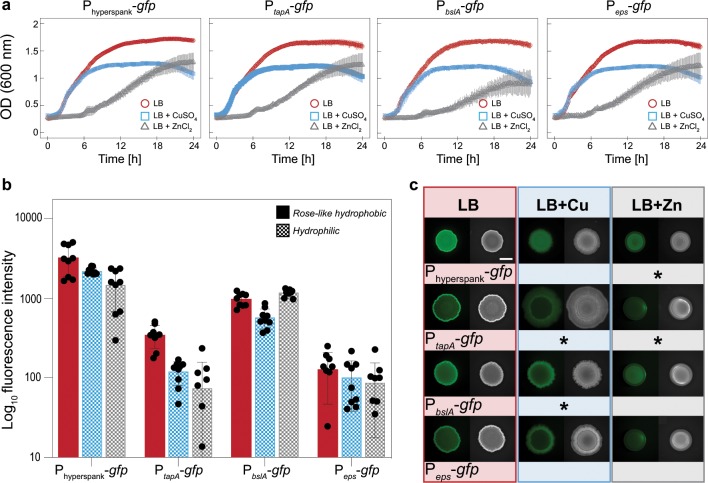Fig. 2. Effect of CuSO4 and ZnCl2 on planktonic growth and biofilm colony fluorescence using GFP-labeled B. subtilis NCIB 3610 strains and LB as a base growth medium.
a OD600 values for planktonic bacteria grown in LB liquid medium over ~24 h, both in the presence and absence of CuSO4 or ZnCl2. b Relative fluorescence intensity values determined for biofilm colonies grown on LB agar with and without CuSO4 or ZnCl2 ions, respectively. Solid bars denote rose-like hydrophobicity, whereas checkered bars denote hydrophilic behavior. c Fluorescence and bright field images of the different biofilm colonies characterized in b; asterisks represent a significant reduction of fluorescence intensity values when compared to biofilms grown on standard LB agar, as assessed by a one-way ANOVA or Welch’s ANOVA with a p value of 0.05 (see Methods). The scale bar in c indicates 5 mm and is valid for all images. Throughout the figure, the colors indicate the type of media used for cultivation: red = LB; blue = LB + CuSO4; gray = LB + ZnCl2. Error bars denote the s.d., which was determined as follows: a from at least 6 individual data points, obtained from a minimum of 3 growth batches with 1 biological replicate, and a minimum of 2 technical replicates each (B ≥ 3, N ≥ 1, n ≥ 2); b from 9 individual data points, obtained form 3 growth batches with 3 biological replicates, and 1 technical replicate each (B = 3, N = 3, n = 1).

